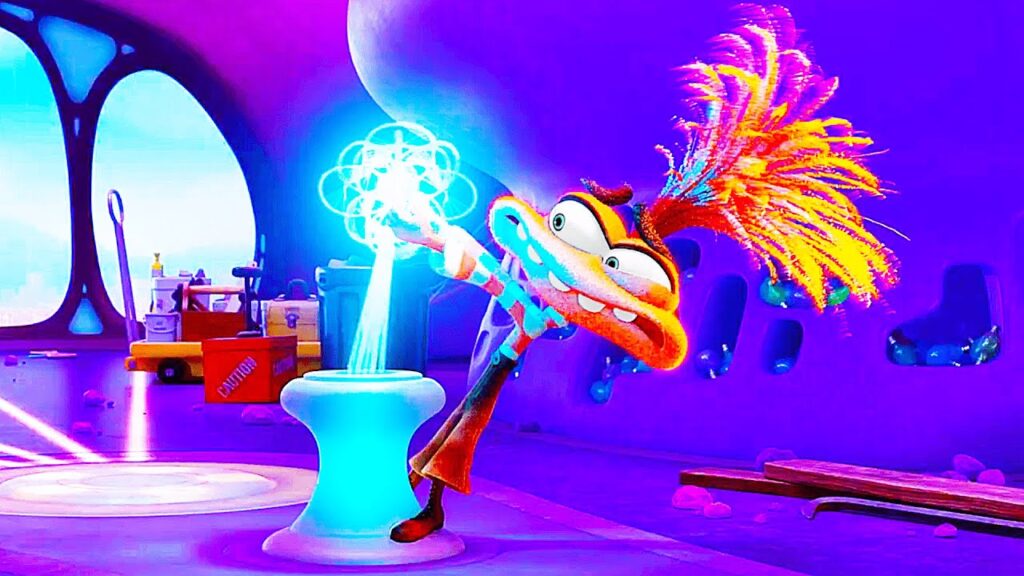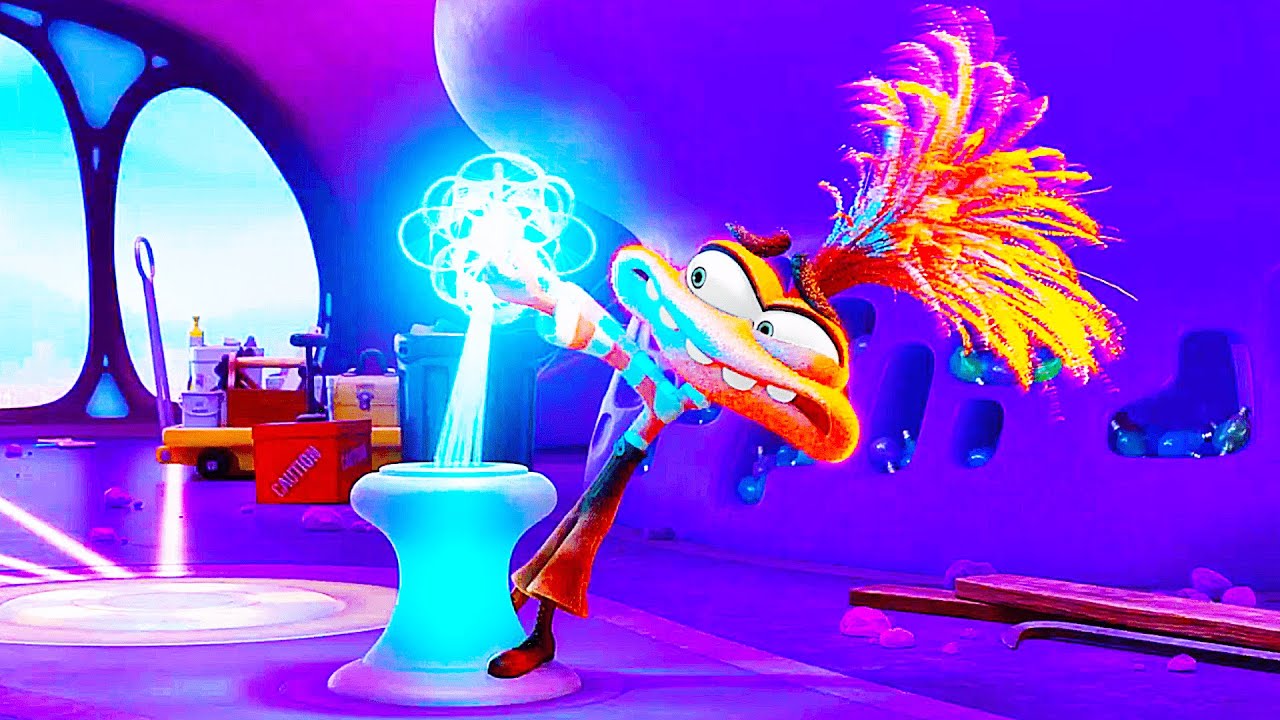
Unpacking Riley’s Memories: A Deep Dive into Pixar’s Emotional Masterpiece
Pixar’s Inside Out gifted audiences with a vibrant, imaginative exploration of the human mind. At the heart of this journey lies Riley’s memories, the colorful orbs that represent her experiences, shaping her personality and guiding her actions. This article delves into the significance of Riley’s memories, examining how they function within the film’s narrative, their impact on Riley’s emotional development, and the broader implications for understanding memory itself.
The Architecture of Memory in Inside Out
Inside Out presents a fascinating visual representation of memory. Riley’s memories are depicted as glowing spheres, each tinted with the dominant emotion associated with that experience. Joy’s memories are a radiant yellow, Sadness’s a melancholic blue, Fear’s a frantic purple, Disgust’s a repulsed green, and Anger’s a fiery red. These colors aren’t arbitrary; they directly reflect the emotional weight of the experience being remembered.
These memories aren’t static. They’re constantly being filed away in Long-Term Memory, a vast labyrinthine storage facility. However, certain memories, particularly those associated with strong emotions, are designated as Core Memories. These Core Memories are the foundation of Riley’s personality Islands – aspects of her identity like Family, Friendship, Hockey, and Goofball. The loss or disruption of these Core Memories is what triggers the central conflict of the film.
Core Memories: Building Blocks of Identity
Core Memories are not merely recollections; they are the fundamental building blocks of Riley’s identity. Each island represents a key aspect of her self-perception and her relationships with the world around her. When Joy and Sadness accidentally dislodge the Core Memories, Riley’s personality Islands begin to crumble, leading to emotional instability and a sense of disconnection. The film highlights the importance of these foundational memories in maintaining a stable sense of self. The journey to recover Riley’s memories is therefore a journey to restore her identity.
The Role of Emotions in Memory Formation
Inside Out emphasizes the inextricable link between emotions and memory. Each memory is colored by the emotion most prevalent during its formation. This aligns with real-world research, which suggests that emotionally charged events are more likely to be vividly remembered. The stronger the emotion, the more deeply ingrained the memory becomes. However, the film also acknowledges the complexity of emotions, showing how even seemingly negative emotions like sadness can play a vital role in processing experiences and fostering empathy. Understanding the emotional context of Riley’s memories is key to understanding her overall well-being.
The Impact of Change on Memory
The central conflict of Inside Out arises from a significant life change: Riley’s family moving from Minnesota to San Francisco. This upheaval throws Riley’s emotional system into disarray, triggering the loss of her Core Memories and the subsequent collapse of her personality Islands. The film subtly illustrates how external changes can impact our internal landscape, altering our perceptions of ourselves and our memories.
Adapting to New Environments
Moving to a new environment requires adaptation, and this adaptation often involves re-evaluating our existing memories and forming new ones. In Riley’s case, the move to San Francisco initially leads to feelings of isolation and disconnect. Her old memories, once sources of comfort and joy, now seem distant and irrelevant. This highlights the dynamic nature of memory; it’s not a static repository of information but a constantly evolving narrative that shapes our understanding of the present.
The Emergence of New Memories
As Riley navigates her new life in San Francisco, she begins to form new memories. These memories are initially tinged with sadness and uncertainty, but as she starts to connect with her new surroundings and make new friends, she also experiences moments of joy and hope. The film demonstrates that even in the face of significant change, the human mind is capable of adapting and creating new, meaningful memories. The blending of old and new Riley’s memories helps create a more complex and resilient emotional landscape.
The Importance of All Emotions in Memory
One of the key messages of Inside Out is the importance of all emotions, not just the positive ones. Initially, Joy tries to suppress Sadness, believing that Riley should only experience happiness. However, as the film progresses, Joy realizes that Sadness plays a crucial role in processing difficult experiences and fostering empathy. Sadness helps Riley connect with her parents, acknowledge her loss, and ultimately adapt to her new life. This realization underscores the importance of accepting and processing all emotions, even the uncomfortable ones.
Sadness’s Crucial Role
Sadness isn’t simply a negative emotion to be avoided; it’s an integral part of the human experience. Sadness allows us to acknowledge loss, connect with others, and appreciate the good things in our lives. In Inside Out, Sadness helps Riley process her disappointment and connect with her parents on a deeper level. By allowing Sadness to express itself, Riley is able to move forward and create new, more meaningful memories.
The Interplay of Emotions
The film also highlights the complex interplay of emotions. Memories aren’t always associated with a single emotion; they can be a blend of different feelings. A memory that initially seems joyful can be tinged with sadness, or a memory that starts with fear can end with relief. This complexity reflects the nuanced nature of human experience and the fact that our memories are often shaped by a multitude of emotions. The evolution of Riley’s memories reflects this emotional interplay.
Real-World Applications of Inside Out’s Memory Model
While Inside Out is a work of fiction, its portrayal of memory has resonated with audiences and professionals alike. The film’s depiction of memory as a dynamic, emotionally charged process aligns with many real-world theories and research findings. This has led to the film being used as a tool for educating children and adults about emotional intelligence and mental health.
Educational Tool
Inside Out has become a valuable educational tool for teaching children about emotions and how they impact our thoughts and behaviors. The film’s colorful characters and engaging storyline make complex concepts accessible and relatable. Therapists and educators use the film to help children identify and understand their own emotions, as well as to develop coping mechanisms for dealing with difficult feelings. Understanding Riley’s memories helps children understand their own.
Therapeutic Applications
The film has also been used in therapeutic settings to help individuals explore their own memories and emotions. By watching Riley’s journey, patients can gain insights into their own emotional processes and develop strategies for managing their feelings. The film can also be a helpful tool for facilitating conversations about difficult or traumatic memories. The visual representation of Riley’s memories can provide a framework for discussing and processing complex emotional experiences.
Conclusion: The Enduring Power of Memory
Riley’s memories, as depicted in Inside Out, offer a powerful reminder of the importance of memory in shaping our identities and influencing our emotional well-being. The film underscores the dynamic nature of memory, the crucial role of emotions in memory formation, and the importance of accepting all emotions, even the negative ones. By exploring the inner workings of Riley’s mind, Inside Out provides valuable insights into the complexities of the human experience and the enduring power of memory. Understanding Riley’s memories helps us understand ourselves a little better.
Ultimately, Inside Out teaches us that our memories are not just records of the past; they are the building blocks of our present and the foundation of our future. They shape our perceptions, influence our behaviors, and connect us to the people and experiences that matter most. By cherishing and understanding our own memories, we can gain a deeper appreciation for the richness and complexity of human life. The journey through Riley’s memories is a journey through the human condition itself.
[See also: The Psychology Behind Pixar’s Inside Out]
[See also: How to Improve Your Memory: Proven Techniques]
[See also: The Science of Emotions: Understanding Your Feelings]

